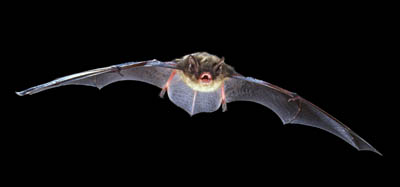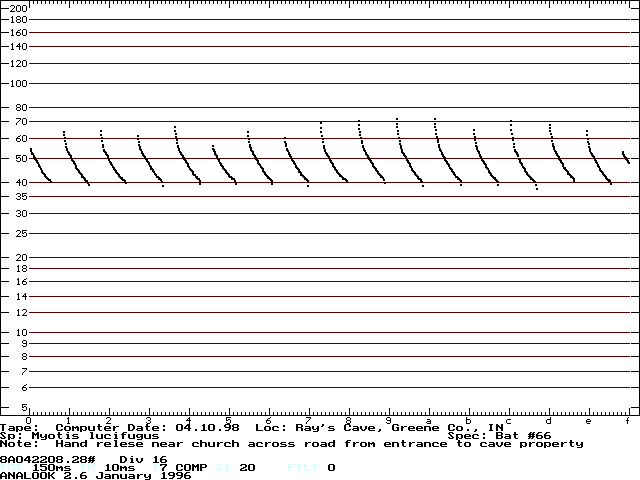
Description:
-
Weight: 1/8 - 3/8 oz. (4-9 g)
-
Body length: 3 1/8 -3 7/8 in. (80-98 mm)
-
Wingspan: 9-11 in. (22-27 cm)
-
Forearm: 1 3/8 - 1 5/8 in. (35-42 mm)
True to its name, the little brown bat is a small bat with glossy tan to dark brown fur. It looks similar to other Myotis bats in the region. One way to distinguish the little brown bat from others is to examine its feet. The little brown bat has large feet with long hairs that extend past the toenails. Despite its small size, little brown bats can live up to 34 years!
Roosts:
-
Summer Roost: Little brown bats often roost in buildings, mostly hot dry attics but sometimes beneath tar paper, under shingles, behind shutters or siding. They also will occasionally use bat houses. If you suspect that you may have a bat roost at your house, please consider reporting it. For exclusion information, please visit our page here.
-
Winter Roost: Little brown bats often use caves or mines for winter roost sites. Little brown bats generally congregate in large colonies in the winter, with one roost (outside of Maryland) reportedly having over 300,000 bats!
Diet:
Gnats, crane flies, beetles, wasps, moths.
Similar Species:
- Indiana Bat does not have hairs on the hind feet that extend beyond tops of claws.
- Northern Long-eared Bat has ears that if bent forward would extend beyond the muzzle.
- Small-footed Bat is much smaller and has a smaller foot and black face mask.
Conservation:
Little brown bats have dramatically declined in Maryland due to
white-nose syndrome. Little brown bats are listed as
species of greatest conservation need in Maryland. In addition, they are ranked as
highly state rare (S1).
Sounds:
Little Brown Bat Call
Courtesy of Bat Call: Acoustic Call Library and Species Accounts
Little Brown Bat Spectrograph

Courtesy of Bat Call: Acoustic Call Library and Species Accounts
Echolocation Frequency: 38-62 kHz
Photo by: Dr. J. Scott Altenbach
Return to Field Guide to Maryland Bats